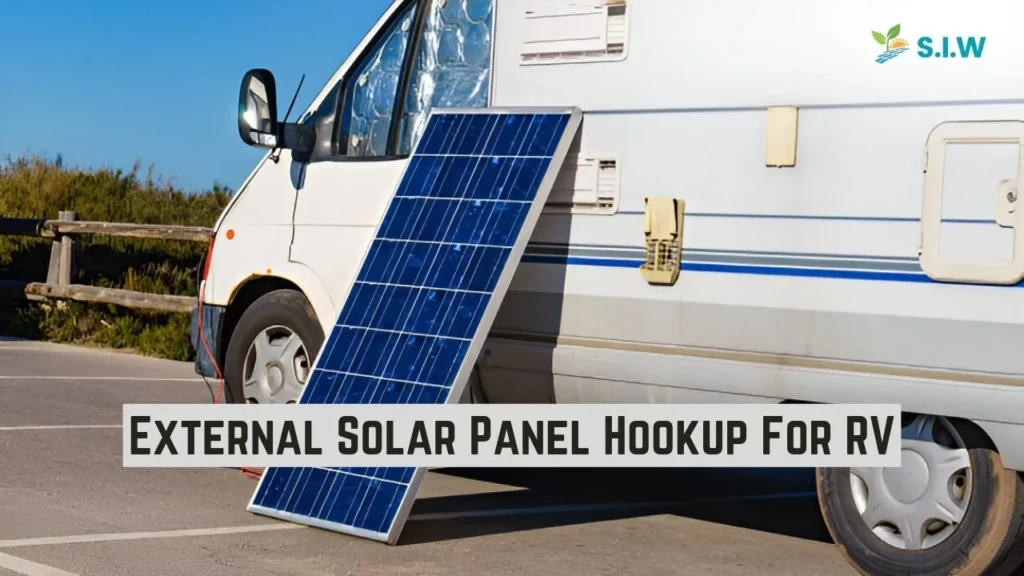If you’re gearing up for an off-grid RV adventure, you’ve probably considered how to keep your rig powered up while exploring the great outdoors. Ever wondered if there’s a more sustainable, convenient way to power up your RV? Could solar energy provide the freedom you’re looking for? In this guide, we’ll dive into the benefits, setup, and essential tips for utilizing an external solar panel hookup for RVs. Let’s take a look at how this eco-friendly option can boost your RVing experience and enhance energy efficiency along the way.
Why Choose an External Solar Panel for Your RV?
Using external solar panels for an RV setup isn’t just trendy—it’s practical and green. Rather than relying solely on gas-powered generators, you can harness the sun’s energy to run appliances, charge electronics, and maintain a comfortable environment in your RV.
- Eco-Friendly and Sustainable Power: Solar power is renewable, which makes it a great option for eco-conscious travelers who want to minimize their carbon footprint.
- Cost Savings Over Time: While initial setup costs can be higher, the long-term savings are often worth the investment as solar energy helps reduce fuel costs.
- Quiet and Low-Maintenance: Unlike generators that require fuel and make noise, solar panels operate silently and require minimal maintenance once installed.
“Traveling off-grid no longer means going without comfort, thanks to solar technology.”
Essential Components for an RV Solar Panel Setup
To get the most out of your solar panel system, you’ll need a few key components:
- Solar Panels: These are the heart of your setup, converting sunlight into electricity. For RVs, consider portable or foldable panels for added flexibility.
- Charge Controller: Protects your batteries from overcharging, which prolongs battery life.
- Batteries: Store the power generated by your solar panels. Deep-cycle batteries are a popular choice for RV setups.
- Inverter: Converts the stored DC power into AC power, making it usable for everyday devices like laptops or kitchen appliances.
Choosing high-quality components will make all the difference in efficiency, durability, and performance.
Step-by-Step Guide to Hooking Up External Solar Panels
Setting up your RV solar panel system might sound daunting, but it’s manageable with the right steps. Here’s a straightforward guide:
1. Choose the Right Spot for Your Panels
- For permanent panels, pick a spot on the roof where they’ll get the most sun. Portable panels should be placed in direct sunlight but can be adjusted throughout the day.
2. Connect the Charge Controller to the Battery
- This essential step ensures that your batteries don’t get damaged. Attach the charge controller directly to the batteries using proper connectors.
3. Wire the Inverter
- To use your stored power for AC appliances, connect your inverter to the battery bank, ensuring that all cables are tightly secured.
4. Test Your Setup
- Once everything is connected, test your setup to ensure that power flows from the panels to the batteries and through the inverter to your outlets.
Maximizing Efficiency with Solar Power
To ensure that you get the most out of your solar panel setup, consider these energy-saving tips:
- Optimize Panel Placement: If using portable panels, adjust their position to capture the maximum sunlight.
- Limit High-Power Devices: Running heavy appliances like microwaves may drain your power quickly. Consider propane options where possible.
- Regularly Clean Your Panels: Dust and debris can reduce solar efficiency by up to 20%.
“The key to energy independence lies in efficiency.”
Is an External Solar Setup Right for You?
So, is solar power the ideal solution for your RVing lifestyle? Think about your typical energy needs, travel plans, and desire for independence. Solar panels provide flexibility and long-term savings, but may require a higher initial investment and some maintenance for peak performance.
Take the Leap Toward Energy Freedom! Investing in an external solar panel setup could revolutionize your RV experience, giving you the freedom to explore off-grid without sacrificing comfort.








